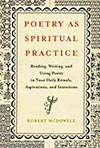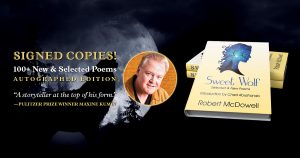
Overview
 Poetry and spirituality, two of the Top Ten most googled words, create when combined the most potent spiritual practice you will ever perform. All of us—Christian, Jew, Muslim, Buddhist, Taoist, Animist, Atheist—seek a meaning beyond ourselves and a path that leads to peace and greater comprehension of the uncertain world we live in. By reading and writing poems and making them an essential part of daily rituals of aspirations and intentions, Poetry as Spiritual Practice guides readers on their quest to find peace, meaning and success in their lives. Though abundant materials exist on poetry and spirituality, very little actually exists that remembers how poetry is the language of devotion, the richest expression of spiritual practice. Poetry is the reverberating note, the pure sound and shape of spirit as it makes sense to us at last. Poetry in spiritual practice creates clarity; it deepens and expands one’s ongoing inquiry into the most profound mysteries. benefits all seekers, generating greater wisdom, compassion, self-confidence, patience and love.
Poetry and spirituality, two of the Top Ten most googled words, create when combined the most potent spiritual practice you will ever perform. All of us—Christian, Jew, Muslim, Buddhist, Taoist, Animist, Atheist—seek a meaning beyond ourselves and a path that leads to peace and greater comprehension of the uncertain world we live in. By reading and writing poems and making them an essential part of daily rituals of aspirations and intentions, Poetry as Spiritual Practice guides readers on their quest to find peace, meaning and success in their lives. Though abundant materials exist on poetry and spirituality, very little actually exists that remembers how poetry is the language of devotion, the richest expression of spiritual practice. Poetry is the reverberating note, the pure sound and shape of spirit as it makes sense to us at last. Poetry in spiritual practice creates clarity; it deepens and expands one’s ongoing inquiry into the most profound mysteries. benefits all seekers, generating greater wisdom, compassion, self-confidence, patience and love.
The Book
Poetry as Spiritual Practice includes an Introduction and four opening chapters on mentor/apprentice relationships, poetry as contemplation and communication, misconceptions about poetry, and the difference between poetry and prose. The book’s middle chapters, 5-8, introduce poetry’s building blocks (words, figurative language, rhyme and meter, stanzas). In chapters 9-17, nine traditional poetry forms are introduced and examined. The forms include haiku, sonnet, villanelle, sestina, elegy, limerick & epigram, ghazal, pantoum, and the prose poem. Chapters 18 and 19 are devoted to free verse and narrative in poetry. Each chapter includes engaging, enjoyable examples of poems and writing exercises that will help the reader create her own poems in each form. Throughout the text, readers will be guided and encouraged to include poems in their on spiritual practice. Poetry as Spiritual Practice concludes with a brief section, In Closing, an Index listing guided exercises by chapter, and a list of poems used as illustrations.



 Sign up below to receive the full-length video of Robert’s engaging dialogue with
Sign up below to receive the full-length video of Robert’s engaging dialogue with 